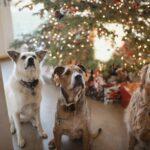Dogs, in their splendid variety, embody a rich history of companionship and purpose. From the diminutive Chihuahua to the towering Great Dane, each breed holds a unique story woven into the fabric of human history. These canine companions, diverse in form and function, offer a fascinating glimpse into the bonds formed between humans and their four-legged friends over centuries.
The Different Types of Dog Breeds
Dogs have been bred over centuries to fulfill specific roles, from hunting and herding to companionship and protection. This selective breeding has resulted in a remarkable diversity of dog breeds, each with unique characteristics and abilities.
Sporting Group
Sporting dogs, bred primarily for hunting game birds, are known for their exceptional energy, intelligence, and athleticism. Breeds like the Labrador Retriever, Golden Retriever, and Cocker Spaniel exemplify this group. They possess an instinct for tracking and retrieving, coupled with a friendly and obedient temperament. Their keen senses and affinity for water make them superb companions for outdoor activities. These breeds require regular exercise and mental stimulation, thriving in active households.
Hound Group
The Hound Group encompasses a wide range of breeds, developed for hunting by sight or scent. Sighthounds, such as the Greyhound and Whippet, are characterized by their lean bodies and incredible speed, originally bred for chasing fast prey. Scent hounds, like the Beagle and Bloodhound, use their powerful noses to track game or lost people. Hounds are generally independent, with a strong prey drive, and can vary significantly in size and temperament.
Working Group
Working dogs are known for their strength, intelligence, and versatility. This group includes breeds like the Boxer, Saint Bernard, and Siberian Husky, which were historically used for tasks such as pulling sleds, guarding property, and performing water rescues. They are loyal and protective, making excellent guard dogs and popular family pets. However, their size and energy level require adequate space and regular exercise.
Terrier Group
Terriers are small to medium-sized dogs, bred originally to hunt vermin. Breeds like the Jack Russell Terrier, Scottish Terrier, and Airedale Terrier are feisty, energetic, and have distinctive personalities. They are known for their determination, courage, and spirited nature. Terriers require consistent training and socialization due to their strong-willed nature and can be excellent companions in the right home.
Toy Group
Toy breeds, such as the Chihuahua, Pomeranian, and Yorkshire Terrier, are bred primarily for companionship. They are small in size but big in personality, often forming strong bonds with their owners. Toy breeds are ideal for city living and homes with limited space. Despite their diminutive size, they can be quite fearless and require the same level of socialization and training as larger breeds.
Herding Group
Herding dogs, like the Border Collie, German Shepherd, and Australian Shepherd, are bred to control the movement of other animals. Known for their intelligence and trainability, these dogs excel in obedience and are often used in various roles such as police service and therapy work. The herding instinct in these breeds is so strong that they may even try to herd humans, especially children, which makes early and consistent training crucial.
The Importance of Understanding Dog Breeds

From pure-bred to mixed-breed dogs, recognizing the distinct characteristics of different dog breeds is crucial for multiple reasons. Firstly, it enables prospective dog owners to make informed choices about which breed aligns best with their lifestyle and environment. For instance, an active individual might thrive with a high-energy breed like a Border Collie, whereas a more sedentary person might prefer a calm and low-maintenance breed like the Bulldog.
Secondly, understanding breed-specific traits assists in providing appropriate care, training, and exercise, which are vital for a dog’s physical and mental well-being. Each breed has unique health predispositions and care requirements. For example, some breeds are prone to specific genetic conditions, while others require intensive grooming. Make sure to check the best resources for dog owners to know more about the specific requirements of different breeds.
Lastly, this knowledge fosters a deeper appreciation and respect for the rich history and diversity of dog breeds, enhancing the bond between humans and their canine companions. It’s not just about choosing a pet; it’s about embarking on a fulfilling relationship that respects and caters to the inherent nature of these diverse and loving animals.
Wrapping Up
In the vast and varied world of dog breeds, each with its unique history, characteristics, and needs, lies a deeper understanding of our relationship with these remarkable animals. By appreciating the diversity among dog breeds, we not only ensure a more harmonious and fulfilling companionship with our canine friends but also honor their distinct identities and roles in our lives. Whether they are guardians, workers, or beloved family members, dogs enrich our lives in countless ways.









